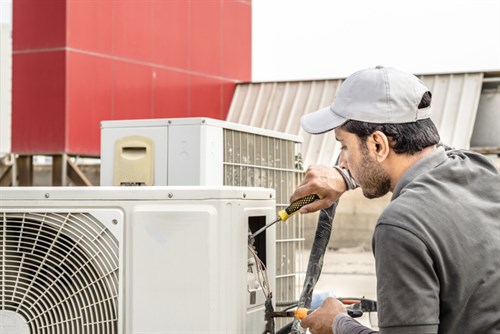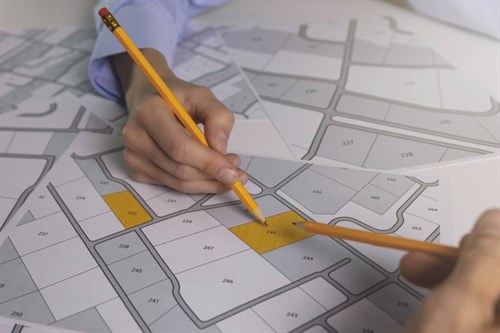When selecting vendors to perform work or other services for an HOA, all Board Members must be involved throughout the bidding process. Before obtaining bids, the Board should thoroughly review the Association’s governing documents to ensure that the bid selection process complies with the rules and regulations. Once that is established, it is recommended that the Board request and review at least three bids for each project or scope of work. As a best practice, bid proposals should be evaluated based on the overall value of the association and not solely on cost. Also, when interviewing vendors, it is advised to consider their overall demeanor, professionalism, and accountability. Lastly, all service and contract agreements should be put in writing.
What is an RFP
An RFP stands for Request for Proposal. It is a document created by an organization, such as a Homeowners Association (HOA), to solicit vendor bids for particular services or products. The RFP outlines the bid specifications the HOA is looking for in a vendor and provides details about the project and the expectations for the vendor. The proposals that the HOA receives back from the RFP are used to help the HOA compare contractors and make an informed decision when selecting a vendor that best meets the needs of the Association.

Understanding the HOA Vendor Selection Process
The HOA vendor selection process can be challenging. Many associations utilize their professional management company to manage vendor recruitment and oversee the process, entrusting the Community Manager to handle the project professionally. Experienced professional Community Managers will consider Board expectations and make recommendations regarding the qualification process. In our experience, Board members and/or Committee members are becoming more involved and want to participate in the qualification and vetting processes.
All maintenance and service contract bids require certain specifications and requirements to uphold the communities’ standards. This is particularly true in large-scale projects or services such as landscaping, painting, roofing, and asphalt (to name a few). However, it is not uncommon to receive proposals from contending vendors that do not compare “apples to apples.” Therefore, identifying bid specifications is the key to executing a successful Request for Proposal (RFP).
Defining Bid Specifications for Successful RFPs
The term “specification” refers to describing the definitive requirements to be provided. This information may include requirements for inspecting, testing, preparing materials, equipment, supplies, service delivery, and insurance. If the job is extensive, hiring a project manager to prepare the bid so that nothing is missed can prove beneficial. Clearly communicating community needs to vendors is crucial, as their priorities in proposals often differ from the Board’s. The goal is to get comparable bids and ensure all parties are on the same page, making the decision process much easier for everyone involved.
When creating proposals for an HOA Board of Directors, it is critical to ensure that bid specifications are adequately defined. Doing so has a two-fold benefit: it helps ensure that all stakeholders are involved in the process and that the selection process complies with the Association’s rules and regulations. Additionally, it allows Board members to select the best vendor possible by evaluating proposals based on value rather than cost. This can help the Association get the best value for their investment and ensure that the vendors meet the Association’s standards and expectations.
For HOAs, in particular, a detailed and specific Request for Proposal (RFP) is essential to ensure that the organization can get the services it needs efficiently and cost-effectively. With a clear understanding of the bid requirements, vendors can provide more accurate quotes and services that enable the HOA to compare submissions more effectively and make an informed decision.
Below are some examples of HOA services that the Board may want to submit formal RFPs for:
Legal
Accounting
New Management Company
Landscaping
Pool maintenance
Pest control
Security
Construction
Waste management
IT
Janitorial
Parking lot maintenance
Electrical
Asphalt
Painting
Tree trimming
Roofing
Fencing

Steps for Creating RFP Specifications
- Establish the Need: Before creating an HOA RFP, you should assess the project’s need, scope of work, and desired outcomes. Then, determine the timeline, budget, contact person, and other relevant information.
- Define the Objective: Clearly define the project’s objectives. This should include the desired outcomes, the project’s goals, and the timeline for completion. Leverage the HOA management company’s industry expertise by asking them for advice on which services to include in the RFP.
- Identify Potential Vendors: Research potential vendors that can meet the project’s objectives. Ask for referrals from other HOAs or organizations that have done similar projects. Utilize your HOA management company’s resources and contacts to identify qualified vendors to participate in the RFP process.
- Create an RFP: Create an RFP that includes all relevant project information, the timeline, the budget, the desired outcomes, and other necessary details. Have your professional management company review the RFP drafts to ensure they meet the project’s clear and concise requirements.
- Communicate the RFP: Once the RFP is created, communicate it to potential vendors. A community Manager can also assist here. Allow sufficient time for vendors to respond to the RFP.
- Review Responses: Carefully review vendor bids. Evaluate each response based on the project’s objectives, timeline, budget, and other factors. Community Managers are trained to determine the criteria to use in the selection process. Some HOAs create a scoring system to help rate each vendor.
- Select the Best Vendor: The HOA’s Board members make the final decision during an RFP process to select the vendor that best meets the project’s objectives.
- Get a Written Contract: Once the Board has selected, they should request a written contract outlining the project’s details, including services provided, payment terms, timeline, and other expectations. This will help to ensure that both parties are on the same page.

When selecting a vendor, it is important to consider the following:
- Expertise in the Field – Look for companies that specialize in the needed services and have a proven track record for delivering quality work.
- Cost – Review at least three bids for each project and consider value over cost.
- Licensed & Insured – Ensure the vendor has a valid business license and carries the necessary insurance coverage required by the Association.
- Quality – Ask for references from previous clients and review their past work.
- Communication – Look for easily reachable vendors who can quickly respond to questions and concerns.
- Reliability—Look for companies that have been in business for a long time and have a good reputation for dependable and timely services.
- Flexibility – Choose vendors to work around the Association’s specific needs and requirements.
Create an Evaluation System for Reviewing Bids
In most cases, a bid evaluation system will help ensure that the vendors meet the Association’s standards and expectations. The bid evaluation should include a review of the work that will be performed, the perceived quality of the work, the timeliness, the overall value, and the cost.
Create a Vendor Evaluation Form
The form should include questions that assess the vendor’s qualifications, experience, customer service excellence, and overall value for the HOA.
Develop a Scoring System
Utilize a scoring system to rate each vendor based on the criteria from the evaluation form. This system should consider the HOA’s needs, goals, and budget.
Establish a Selection Committee
A selection committee of HOA representatives will review each evaluation form and determine which vendor is best suited for the HOA.
Finalize the Selection Process
After all bids and vendors have been evaluated and scored, the selection committee will decide which one best meets the HOA’s needs. The HOA should contact the chosen vendor to discuss obtaining a contract and other details.
Monitor the Vendor’s Performance
Once the project has started, monitoring the vendor’s performance over time is important to ensure they meet the HOA’s expectations. This should include feedback surveys, customer service reviews, and other performance evaluation methods.
Example of a Bid Scoring System
- Price: 0-2 points for low pricing, 0 points for mid-range pricing, and -2 points for high pricing
- Quality: 2 points for high quality, 1 point for mid-range quality, and 0 points for low-quality
- Experience: 2 points for extensive expertise, 1 point for some experience, and 0 points for no experience
- Reputation: 2 points for a strong reputation, 1 point for some reputation, and 0 points for no reputation
- References: 2 points for multiple references, 1 point for some references, and 0 points for no references
- Delivery 2 points for on-time delivery, 1 point for some on-time delivery, and 0 points for late delivery
In addition to vendor selection, the Association should have safety protocols to protect both the vendors and the residents. This includes having a safety plan to address hazardous conditions, properly labeling hazardous materials, and having safety equipment on hand.
The last step in the selection process is establishing a complaint-resolution policy to ensure that disputes between the Association and its vendors are handled promptly and efficiently. This policy should include a timeline for resolving the dispute and how the parties will communicate.
In conclusion
Following the steps mentioned above will help to ensure that the vendor bid selection process is fair and transparent and that the Association is getting the best value for its investment.
Bid specifications should be comprehensive and detailed, as it is the only way to ensure that all potential service contractors can provide the HOA-required services. By creating a thorough and accurate RFP, the HOA Board can make an informed decision and select the best provider for the job.
Professionalism, accountability, and experience should be paramount when selecting any vendor. AAM has over 33 years of professional community management experience with seasoned and trained management professionals, which can help facilitate bidding. If your HOA is looking for new management services from a reliable and tenured management company, consider AAM.






















